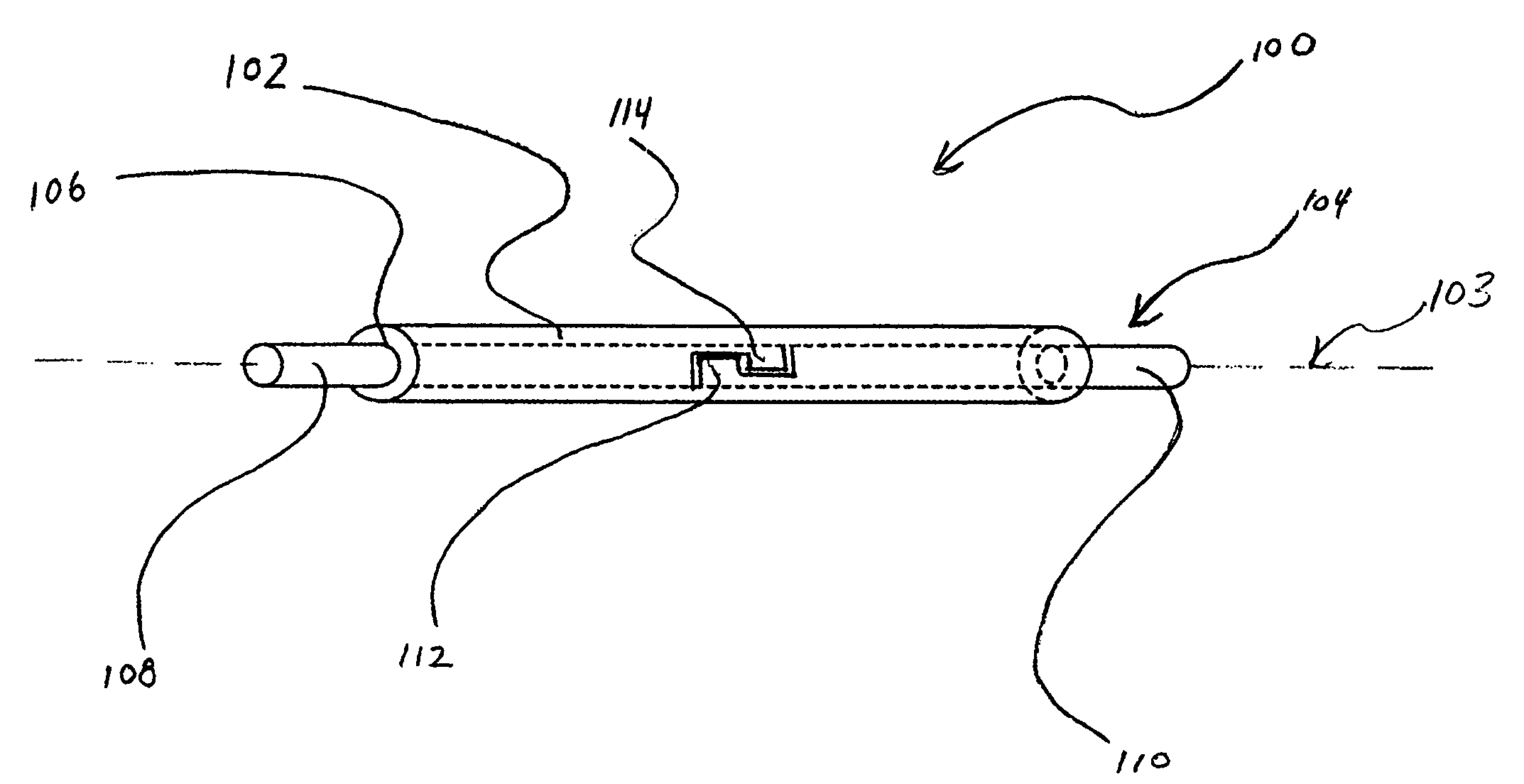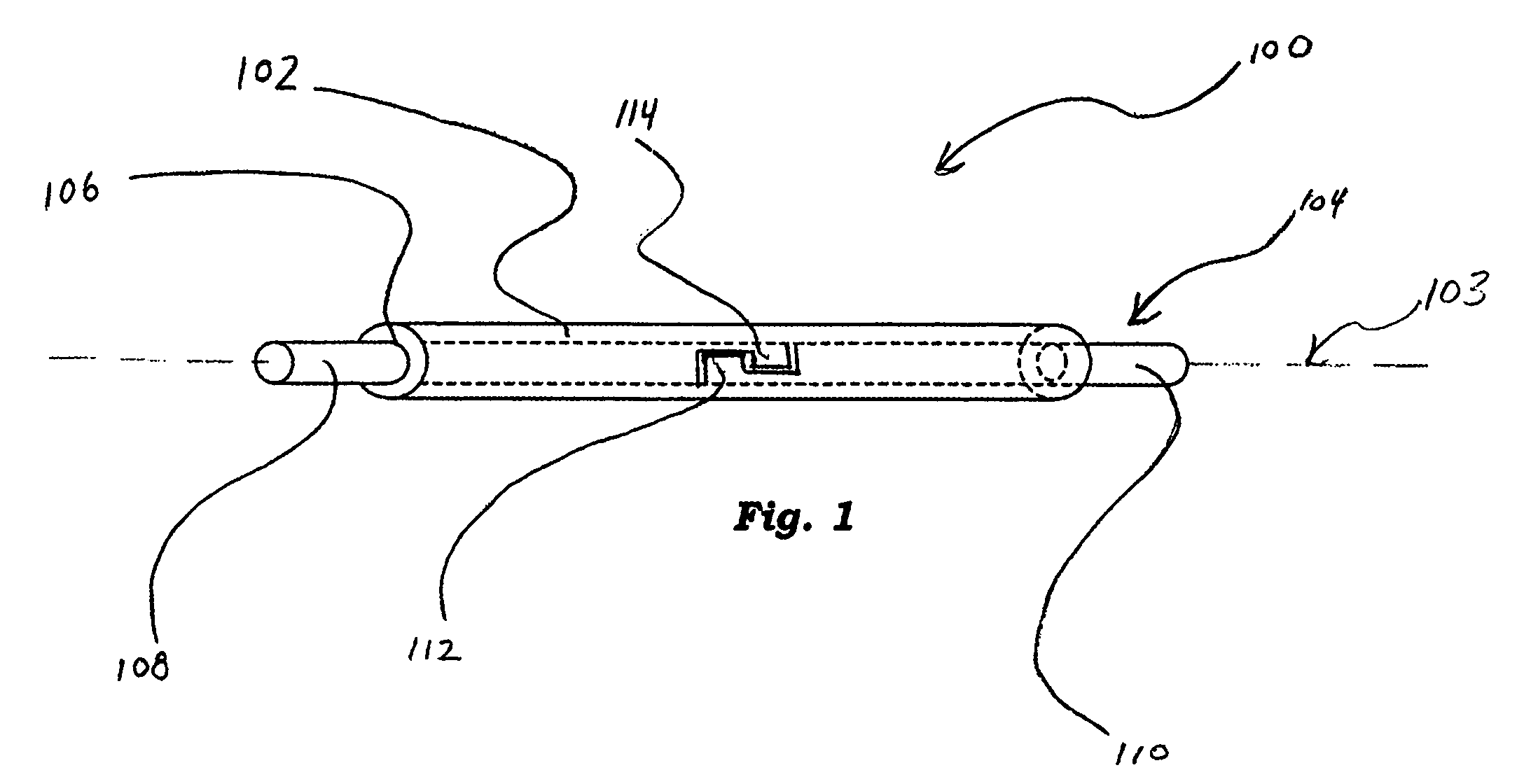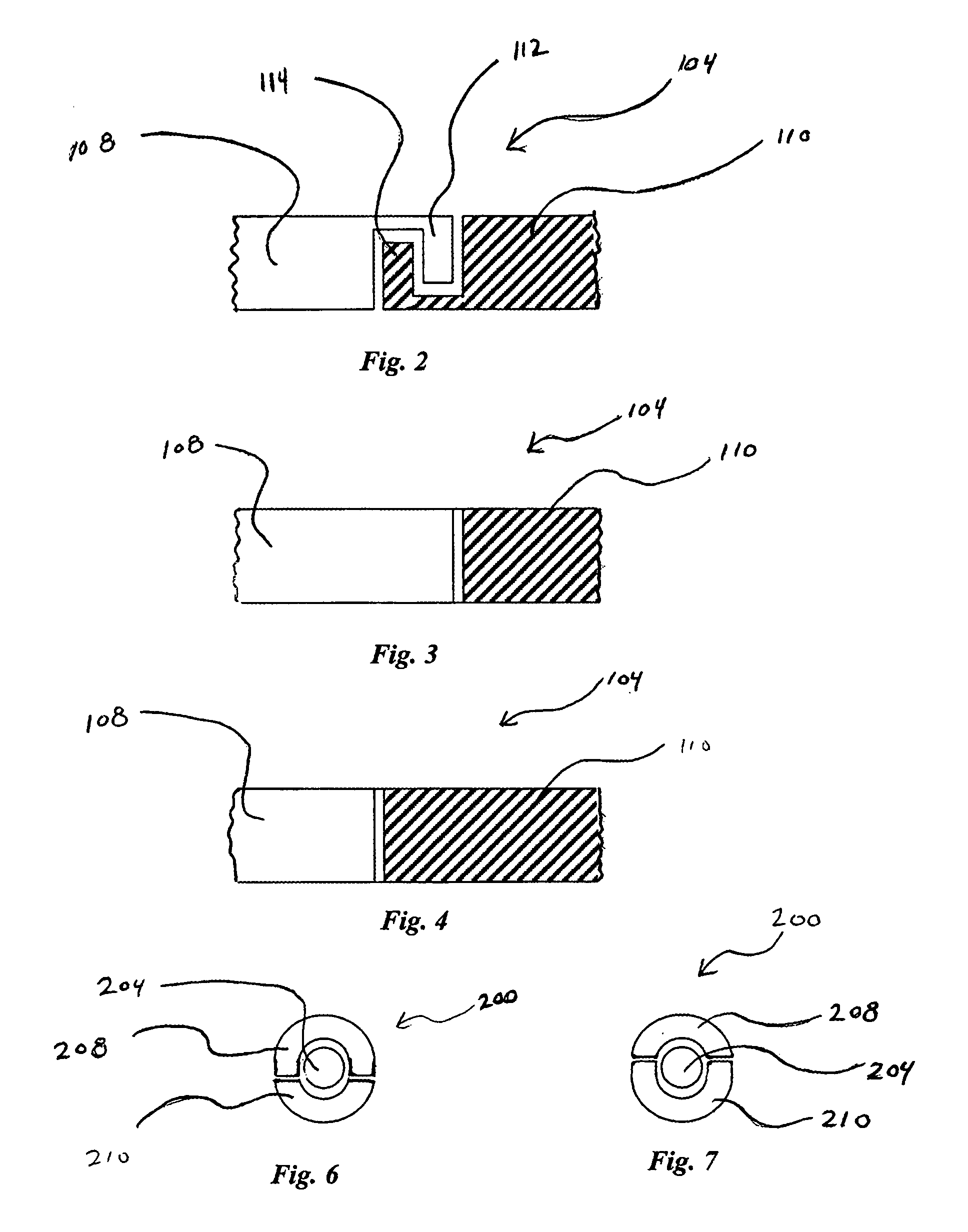Medical device having mechanically interlocked segments
a technology of mechanical interlocking and medical devices, which is applied in the field of medical devices, can solve the problems of affecting the overall manipulability of medical device components, the positioning of medical devices is considerably more complicated than before, and the use of materials with too much flexibility can inhibit the control and steerability of the guidewire, so as to prevent the decoupling of the segments and prevent the relative movement of the segments
- Summary
- Abstract
- Description
- Claims
- Application Information
AI Technical Summary
Benefits of technology
Problems solved by technology
Method used
Image
Examples
first embodiment
[0046] In some embodiments, a medical device comprises a tube and a corewire extending into the interior of tube. A first embodiment is depicted in FIGS. 1-4. In this embodiment, segments of a corewire are mechanically bonded using an approach described herein. Referring to FIG. 1, medical device 100 is depicted comprising a tube 102 and a corewire 104 extending into the interior of tube 102. Generally, tube 102 has a major axis 103 along an elongated dimension of the tube relative to a minor axis lying in a minor plane, and a bore 106 that runs substantially parallel to the major axis. As depicted in FIG. 1, the corewire 104 can be selectively and slidably positioned within bore 106. Corewire 104 is elongated also along axis 103.
[0047] Referring to FIGS. 1-4, corewire 104 can comprise first segment 108 mechanically coupled to second segment 110. In some embodiments, first segment 108 can comprise key portion 112 which can mate with corresponding lock portion 114 formed into second ...
second embodiment
[0051] A second embodiment is depicted in FIGS. 5-7. Referring to FIG. 5, a medical device 200 is depicted comprising a tube 202 and corewire 204 extending into the interior of tube 202. As depicted in FIG. 5, tube 202 can comprise an elongated major axis 203 relative to orthogonal minor axes and a bore 206 extending through the tube running substantially parallel to the major axis. In some embodiments, corewire 204 can have an outer diameter that is slightly smaller than the inner diameter of bore 206 such that corewire 204 can be introduced into bore 206 of tube 202. In some embodiments, tube 202 can comprise first segment 208 coupled to second segment 210 by mechanical interface 212. As depicted in FIG. 5, mechanical interface 212 can comprise key structure 214 and corresponding lock structure 216, which can couple first segment 202 to second segment 204. FIGS. 6 and 7 depict cross sectional views of mechanical interface 212 taken along lines 6-6 and 7-7, respectively, of FIG. 5....
PUM
 Login to View More
Login to View More Abstract
Description
Claims
Application Information
 Login to View More
Login to View More - R&D
- Intellectual Property
- Life Sciences
- Materials
- Tech Scout
- Unparalleled Data Quality
- Higher Quality Content
- 60% Fewer Hallucinations
Browse by: Latest US Patents, China's latest patents, Technical Efficacy Thesaurus, Application Domain, Technology Topic, Popular Technical Reports.
© 2025 PatSnap. All rights reserved.Legal|Privacy policy|Modern Slavery Act Transparency Statement|Sitemap|About US| Contact US: help@patsnap.com



